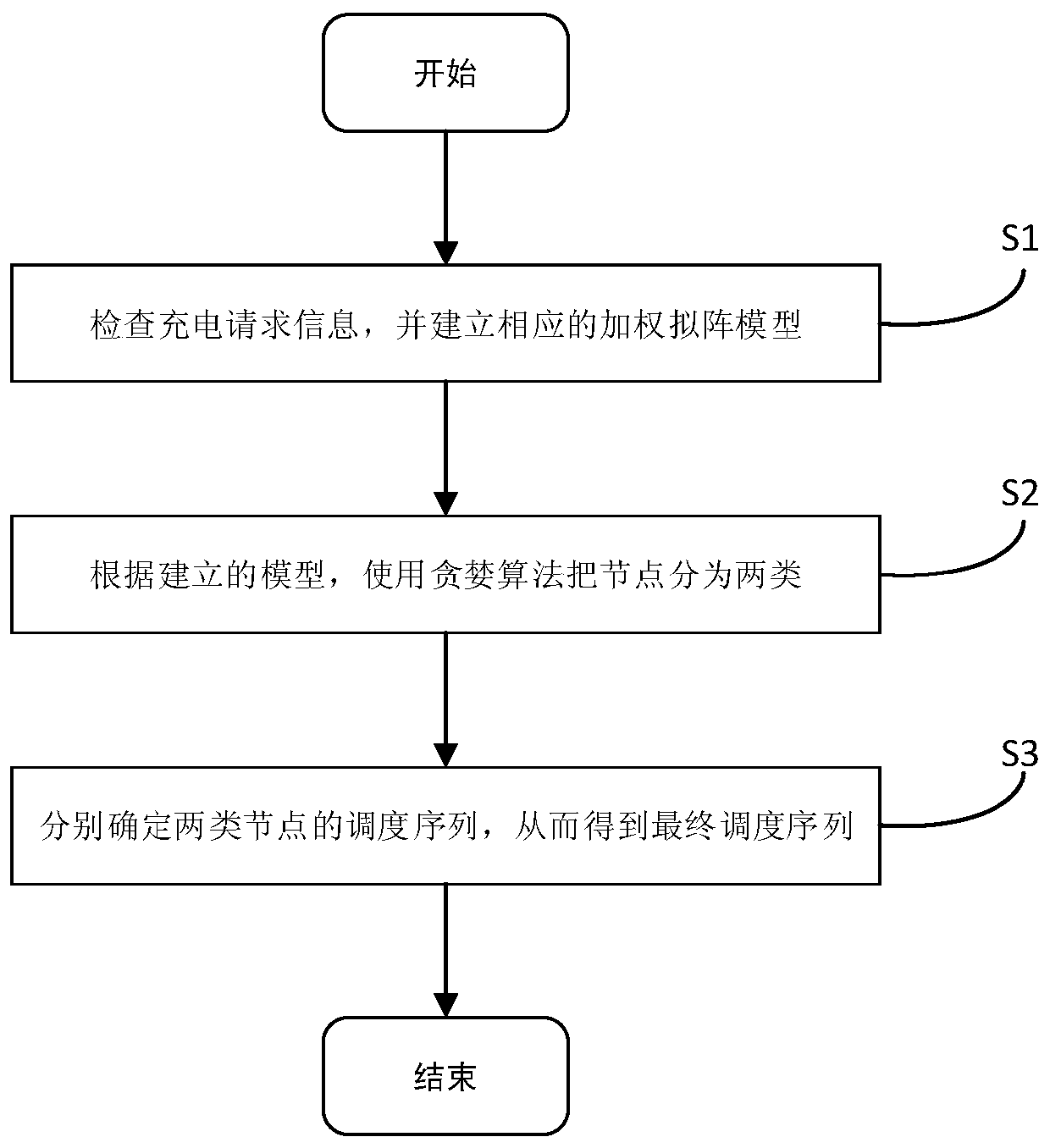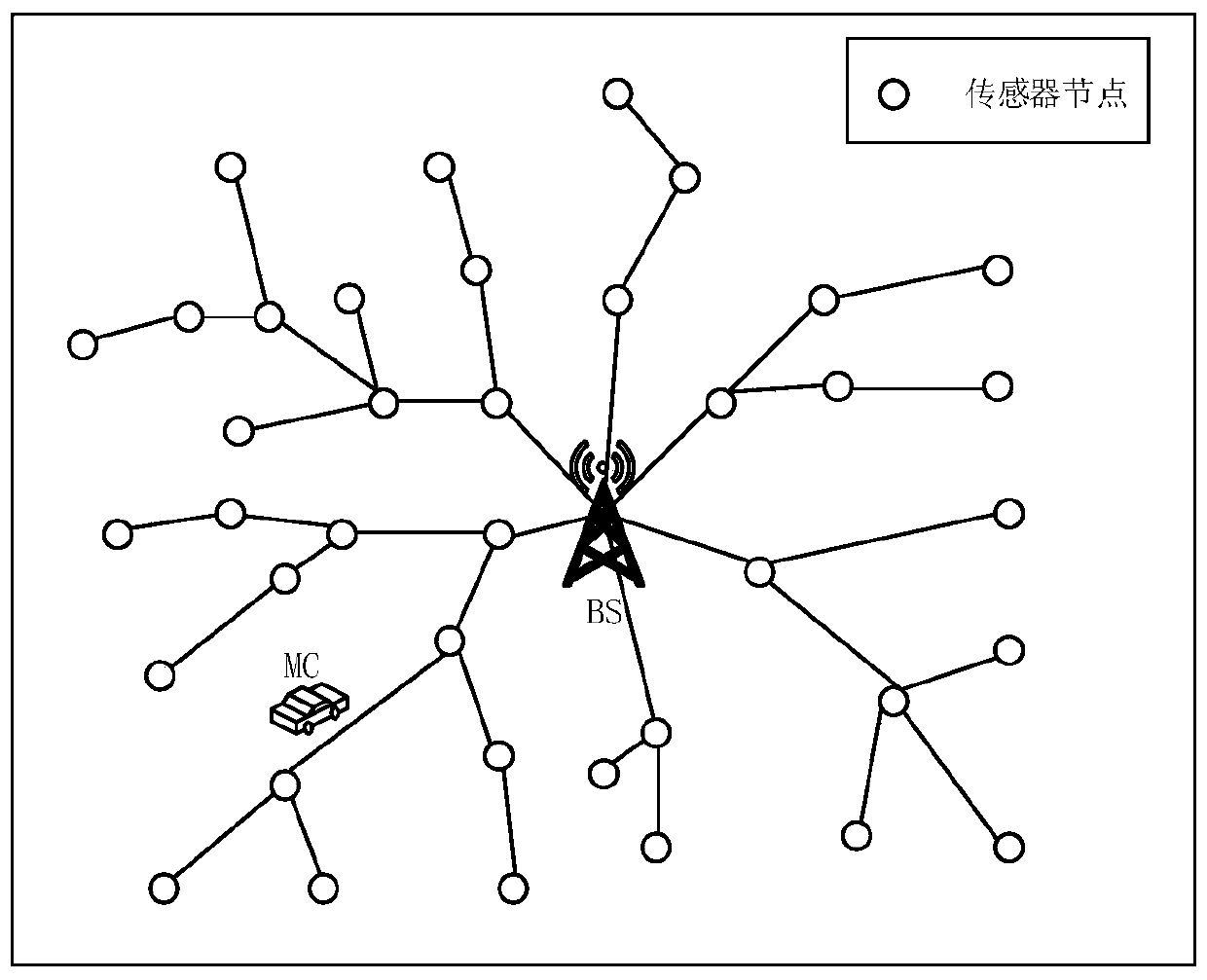Wireless rechargeable sensor network charging scheduling method based on quasi-arrays
A sensor network and scheduling method technology, applied in the field of wireless rechargeable sensor network charging scheduling based on matroids, can solve the problem of increasing the energy consumption of data transmission of the previous hop node, affecting the network topology, increasing the total energy consumption of the network, etc. The problem is to reduce the length of the moving path, reduce the total energy consumption, and improve the energy utilization rate.
- Summary
- Abstract
- Description
- Claims
- Application Information
AI Technical Summary
Problems solved by technology
Method used
Image
Examples
Embodiment
[0031] This embodiment provides a charging scheduling method for a wireless rechargeable sensor network based on a matroid, and the flow chart is as follows figure 1 As shown, it is applied to a wireless sensor network composed of several sensor nodes, a base station (BS) and a mobile charging vehicle (MC), such as figure 2 As shown in , the sensor node sends a charging request to the base station when its own energy is insufficient. The base station maintains a request task queue, and periodically checks the task queue to generate an access sequence for the mobile charging vehicle. In each round of tasks, the mobile charging vehicle traverses the nodes in the access sequence in order to charge it. The generated mobile charging vehicle Methods for accessing sequences include:
[0032]S1. Check the charging request information, and establish a corresponding weighted matroid model:
[0033] S1.1. The base station checks the charging request task queue, and the set of task que...
PUM
 Login to View More
Login to View More Abstract
Description
Claims
Application Information
 Login to View More
Login to View More - Generate Ideas
- Intellectual Property
- Life Sciences
- Materials
- Tech Scout
- Unparalleled Data Quality
- Higher Quality Content
- 60% Fewer Hallucinations
Browse by: Latest US Patents, China's latest patents, Technical Efficacy Thesaurus, Application Domain, Technology Topic, Popular Technical Reports.
© 2025 PatSnap. All rights reserved.Legal|Privacy policy|Modern Slavery Act Transparency Statement|Sitemap|About US| Contact US: help@patsnap.com



